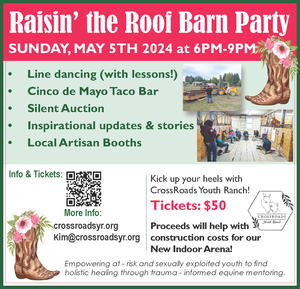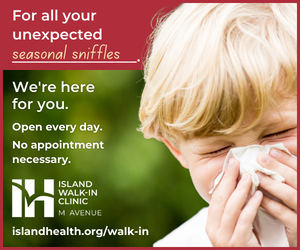Fish for dinner: wild or farmed?
September 20, 2017
Omega-3 essential fatty acids, antibiotics, obesity – are these boring subjects? Maybe not.
Three hundred thousand fish, escaping confinement, jumped into the Salish Sea from human-built pens August 19 and sent me on an Internet surfing orgy – only to find there is hot debate over the health benefits of wild fish over farmed fish.
Farmed fish are over half of the fish consumed by humans worldwide.
Putting more than a million fish in an enclosed pen is analogous to “industrial” chicken farms, containing massive, windowless sheds, each holding tens of thousands of birds. The chickens are penned, unable to move. They, too, are pumped full of antibiotics.
Research brought me into the world of fatty acids, PCBs, and antibiotics.
Corporate owners of fish farms tout the benefits – and profits – of farmed fish. Sports and commercial fishermen and nutritionists point thumbs down or flip an obscene gesture at farmed fish, particularly salmon. The U.S. Department of Health doesn’t take sides. They advise eating fish. They caution limiting intake and amounts, for mercury and PCBs in fish can kill you.
What’s a girl to do? What to serve for dinner?
POPs are on the platter. You may be serving POPs: Persistent Organic Pollutants. PCBs are just one. Yes, PCBs – polychlorinated biphenyls – industrial chemicals.
As far back as 2003, “seven of ten farmed salmon purchased at grocery stores in Washington DC, San Francisco, and Portland, Oregon were contaminated with polychlorinated biphenyls (PCBs) at levels that raise health concerns, according to independent laboratory tests.” That’s from the Environmental Working Group (www.ewg.org), a green-leaning health advice group.

Farmed salmon have up to sixteen times more PCBs than wild salmon depending on where the pens are. These findings supported previous research from Great Britain, Ireland and Canada.
POPs have been linked to type 2 diabetes and obesity. They increase stroke in women according to the Cleveland Clinic. The Clinic further stated, “PCB (one type of POP) levels are five to ten times higher in farmed fish than in wild fish.”
Kristin Kirkpatrick, a registered dietitian at the Cleveland Clinic, has researched the differences between wild and farmed salmon. Her conclusions are cited by the United States Department of Agriculture.

Dr. Keith Kantor, considered a leading expert on nutrition and addiction, reports “a group of Cornell researchers found that levels of pesticides, dioxins, PCBs and other contaminants were up to 10 times higher in farmed salmon than in wild Pacific salmon. Three additional substances that may be carcinogenic (cancer causing)—dioxins, dieldrin, and toxaphene were consistently found in farmed salmon.”
Wild salmon also carry PCBs and mercury, but in lower levels and, by some studies, far less than farmed fish.
Both wild and farmed fish supply omega fatty acids.
Omega fatty acids – particularly numbers 3 and 6 – are essential to human brain development, immune system support and heart health. Your body cannot produce them, but it must ingest them.
A fillet of farmed salmon has 130 more calories and twice the fat as a comparable sized wild salmon. The extra fat creates slightly more omega-3 fatty acids, a good thing. But there is twenty percent more saturated fat, which is bad.
The ratio for human health benefits is twice as much omega-6 as omega-3.
A 2016 study found “modern aquaculture produces fish that contain less omega-3 fatty acids than do fish grown naturally in the ocean, rivers and lakes.” Artemis P. Simopoulos published this in the journal “Nutrients.” Simopoulos is the founder and president of the Center for Genetics, Nutrition and Health, a nonprofit educational organization.
Dr. James Norman, an endocrinologist, also found that farmed fish have three times more omega-6 than omega-3.

In 2015 Reuters reported farmed fish imported from Chile were pulled from Whole Foods Market Inc, Trader Joe’s, Costco, and Target stores due to their high antibiotic concentrations.
The U.S. food industry is increasingly concerned about the overuse of antibiotics. Wal-Mart Stores Inc is pressuring their suppliers to limit the use of antibiotics.
Some of the nation’s best chefs are critical. Eating “natural” is not the same as eating Atlantic Salmon from Salish Sea fish pens. Gary Jenanyan, former Executive Chef at Lindblad Expeditions, likens it “to eating fruit from Chile in winter months. It looks like salmon, but has virtually none of the depth of flavor, richness; or distinct flavor of wild salmon. Not even close.”
Jenanyan, a co-instructor with Julia Child, asks “what is the point? Why would anyone agree to spend that much money per pound for relatively flavorless protein that is not pleasurable to eat?
My sentiments exactly. Now, where is that wild salmon? Stay tuned.



Reader Comments(0)